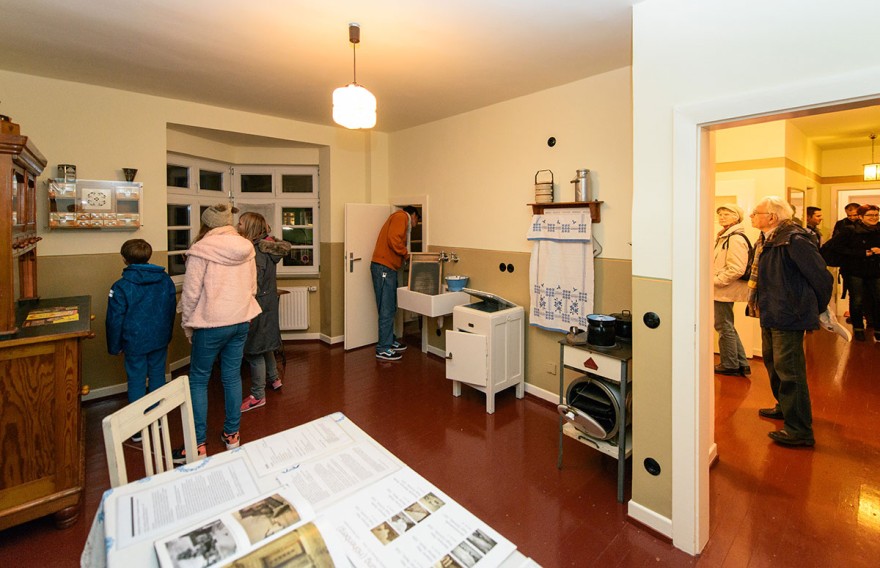The Germania housing estate in the Höhenberg district of Cologne, just ten minutes by car from Koelnmesse, is a remarkable architectural achievement in its own right. Built between 1920 and 1928 on the former grounds of the Germania coal mine, some of the architects involved in its planning were amongst the leading names of the time. The result reflects different architectural styles of the Weimar Republic that have come together in a harmonious whole as a work of architecture. Even at the time it was considered exemplary for urban residential building. Weimarer Strasse is also home to another special find: no. 15, Paul-Schwellenbach-Haus. A historic house museum has been set up here to convey the feeling of living in the 1920s.

On the 1st and 3rd Sunday you can visit the house museum in Cologne's east. Photo: Costa Belibasakis
The oven in the kitchen looks more than a little antiquated, and so does the object beside it: an icebox, which served as a refrigerator in the beginnings of the 20th century. It was a real luxury back then. In those days, cooling was not electrical; instead it used a block of ice inserted in the top compartment of icebox. An impressive buffet, a table and chairs complete the kitchen furniture. A broad, solid-wood bed dominates the bedroom next door. The cylindrical furnace and the freestanding bathtub in the bathroom are accurate replicas of contemporary objects.
Historically valuable
The items of furniture were supplied by the Kölnisches Stadtmuseum (museum of the City of Cologne). The largest property company in Cologne, GAG Immobilien AG, worked closely with the museum during the furnishing of the house museum. The home was designed and refurbished in the historical style by the GAG itself – faithful to the originals with oxblood-red floorboards, black sockets and Bakelite light switches. Many old photos on the walls give an impression of what the Germania estate looked like almost 100 years ago.
The house museum is intended to express a sense of historical responsibility, a responsibility the GAG is very much aware of. The house museum therefore does not aim to embody dry theory, but rather to be a living history lesson that visitors can touch – a history told by the residents of the Germania estate themselves. Local residents are trained as museum guides in collaboration with the senior citizens’ network. They accompany groups of visitors on tours of the house museum and the neighbouring district, and enrich historical facts with their own stories.
The house museum is open every first and third Sunday of the month from 2:00 to 4:00 p.m. Visits can be arranged at other times.
You might also be interested in:

Bauhaus in Cologne

Bauhaus Architecture in the Bergisches Land

100 years Bauhaus at the imm cologne

To the category "Design and Architecture"



